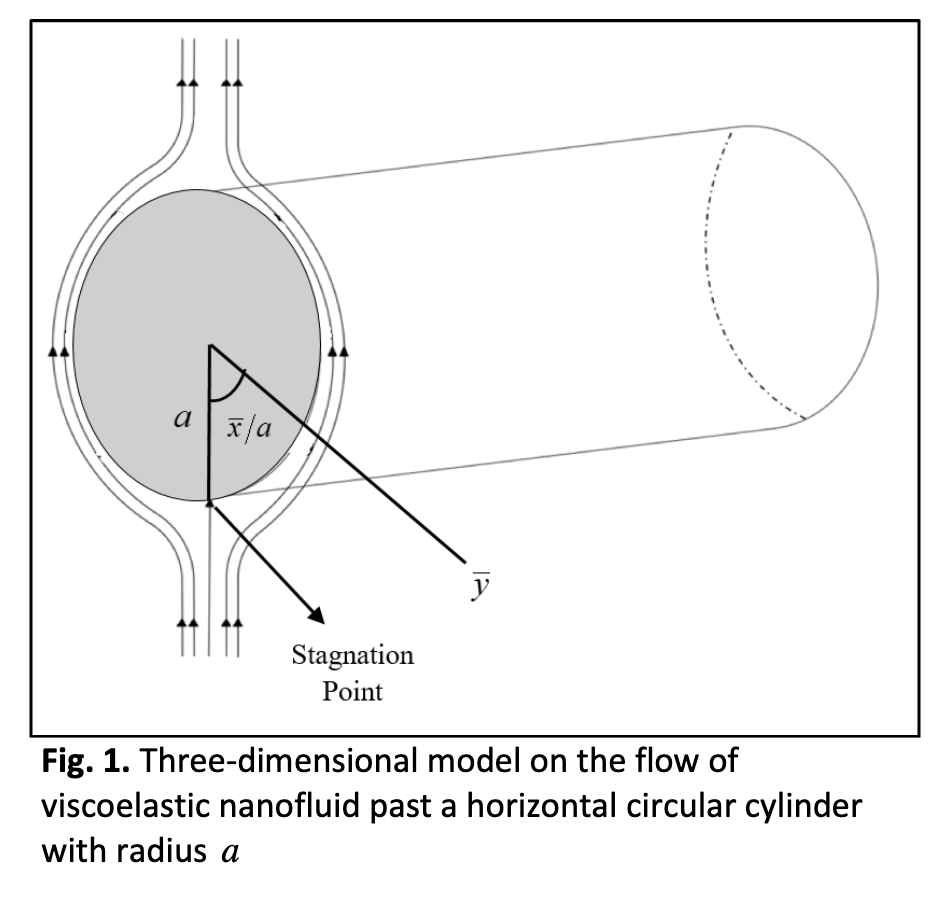Numerical Solutions of Mixed Convection Flow Past a Horizontal Circular Cylinder with Viscous Dissipation in Viscoelastic Nanofluid
Keywords:
viscous dissipation, viscoelastic, nanofluidAbstract
The aim of the present study is to investigate numerically the impact of viscous dissipation on steady two-dimensional mixed convection flow past a horizontal circular cylinder in a viscoelastic nanofluid with convective boundary conditions. The Tiwari and Das model were selected in this study by choosing Carboxymethyl cellulose solution (CMC-water) as the base of fluid and copper (Cu) as the nanoparticle. The transformed boundary layer equations for momentum and energy subject to the appropriate boundary conditions were numerically solved by employing numerical scheme, namely Keller-box method. The accuracy of the present results was validated through comparison with previously published results and revealed an excellent agreement with those results. The results were analysed in detail and presented graphically for the velocity, temperature, skin friction coefficient as well as the heat transfer coefficient. The obtained results indicated that there was no significant effect for velocity and temperature profiles when values of Eckert number increased. However, it is significant for skin friction and heat transfer coefficient profiles. In the meantime, thermal conductivity of the fluid may increase by increasing the concentration of nanofluid.









